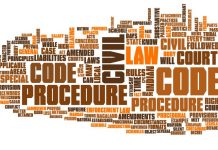This article is written by Gaurav Kumar, from Surendranath law College (University of Calcutta). The article discusses the online filing system before the Delhi High Court post COVID-19.
Table of Contents
Introduction
In the times of COVID-19, the institutions of the Indian judicial system have suffered equally, facing the wrath of pandemic and remaining closed for a very long time. Later when the courts felt the need and necessity to hear the urgent matters regarding human rights violation, fundamental rights violations and so on, it started working in virtual mode. The Delhi High Court started its virtual hearing of matters from last week of April, 2020 taking the prior pending matters on urgent basis.
Later on, the court found that it was the need of the hour to implement the e-filing system amidst the pandemic as considering the pendency of cases. Chief Justice of Delhi High Court Justice D.N Patel inaugurated the e-filing system on June 13, 2020 for the purpose of allowing the advocates and litigants to file applications, replies, and rejoinders from any place online. The practice directions of e-filing were also issued by the court amending the pre-existing “Practice Directions for Electronic Filing (e-filing) October 25, 2013”. The main aim of the e-filing was to continue the work without getting litigants and advocates infected from the COVID-19. In this article, we will briefly discuss the steps of e-filing of applications before the Delhi High Court pre-covid period and post-covid period. The need of such e-filing and the arising problems during such e-filing is also discussed in the article.
Pre-COVID period to file a case in Delhi High Court
Before the COVID-19 pandemic, the petitions/applications were filed physically at the filing-counter of Delhi High Court. The procedure guidelines for the offline filing was provided as:
Filing of the petition
- All plaints/petitions/applications and documents shall be presented by the plaintiff, petitioner applicant, defendant or respondent in person or by his duly authorised agent or by an advocate duly appointed by him for the purpose, at the filing counter. All such documents filed in court shall be accompanied by an index in duplicate containing their details.
- The officer in charge at the filing counter shall endorse the date of receipt on the plaint/application and also on the duplicate copy of the index and return the same to the party. The officer shall also enter the particulars of the matters in his daily filing register and send the same for examination to the concerned authority. In case of any error found the registrar may send the plaint/application to the said party for rectification or amendment.
- If the party fails to remove such defect from the petition/application, the registrar shall record such error in its registry. In case the party is aggrieved by such rule of the registrar, he/she may prefer an appeal against the registrar within 15 days of time.
Service to the opposite party
Where notice of an interlocutory application is issued by the court, a copy of the application, the affidavit in support thereof (and if so ordered by the court, of other documents filed therewith), if any, shall be served along with the notice to the other party. The aforesaid copies shall show the date of presentation of the original and the name of the advocate, if any, of such party.
Amendment of plaint and attestation of such amendment
The attestation of any of the plaint Order II, Rules 6 and 7, Order VI, Rules 16 and 17, Order VII, Rule 11 and Order XXI, Rule 17 of the Code of Civil Procedure, 1908, shall unless otherwise ordered by court, be done by the registrar. The amendment of the plaint shall be done by the party and the attestation of such amendment shall also be done by the registrar unless it is ordered by the court.
Post COVID period to file a case before Delhi High Court
After the complete lockdown was imposed in India by the government, the courts including the Delhi High Court were completely closed. Later on, looking at the intensity of urgent pending matters the High Court of Delhi started working in virtual mode taking the filing of petitions, rejoinders online. The electronic filing in Delhi High Court was inaugurated by Chief Justice D.N Patel in a webinar on June 13, 2020. For the purpose of electronic filing, the practice direction was also issued to the litigants and advocates. The gist of the practice directions are as:
Definition under the practice direction
- Rule 2 of the practice direction defines the important legal terminologies pertaining to advocacy.
- Sub-rule 2.1 defines the term action as proceedings instituted in the high court including those by way of suits, appeals, civil or criminal writ petitions, revision petitions, contempt petitions, execution petitions, arbitration petitions, probates, and also interlocutory applications of all kinds.
- Sub-rule 2.2 defines the term administrator as registrar or any other person appointed by the Chief Justice for the purpose of administering the electronic filing process.
- Sub-rule 2.6 defines the term electronic filing as the filing of a petition or application on the high court online portal or through intranet at the designated centre.
General instructions
Rule 3 of the practice procedure lays down the rules for the electronic filing. It states that the online electronic filing shall be done by visiting the online website of Delhi High Court http://delhihighcourt.nic.in/efiling.asp. It further states that the advocates or litigants can file by visiting on the said portal from their home, anyplace or remotely except in the condition where the application has been pending. In case the advocate or litigant is unable to e-file the application/petition due to access of internet or anything he can file through visiting the designated centre on making a stipulated payment as provided by the high court. It is provided that the size of the file shall be not more than 50 MB. If the size of the file is larger than the provided the litigant/applicant can visit the designated centre for the filing through intranet.
Registration steps for filing
Rule 4 states about the steps for e-filing. The advocates or the litigants-in-person who are already registered on the high court e-portal can login with their respective IDs. The rest who are not registered need to get themselves registered first. The advocates need to fill the requisite form available on the e-portal of the high court website and attach the self-attested copy of Bar Council Certificate (in pdf format only). The litigants in person have to follow the same process except for the purpose of Photo ID they need to submit the scan-copy of any Government ID card.
Further, the litigant in person has to submit an affidavit that he/she has not engaged an advocate for action. In case the litigant has engaged any advocate he/she shall have to inform the administrator for the transfer of data to his subject on the advocate’s account. Once the data of the respected subject is transferred to the advocate with whom the litigant in person is engaged the litigant in person will be in position to access the data. If the advocate and the litigant in person follows all the aforementioned steps he/she will be allotted the login ID with password on the next day.
Frame of pleading and formatting
The pleading should be clear and concise. The affidavit of the parties should bear his/her name.
Rule 6 talks about the formatting. It states that all the original typed text material including notice of motion, memorandum of parties, main petition or appeal, interlocutory application(s), reply, status report, affidavit, documents, etc., as the case may be, will be prepared electronically. The paper size should be A4, top, bottom, left and right margin should be 1.5”,1.5”,1.75” and 1.0” respectively. The alignment should be justified and the font should be Times New Roman. The font size and line spacing shall be 14 and 1.5 respectively. The document should be made in OCR searchable mode in PDF format by the software.
Digital signature
The digital signature shall be appended on the documents by the advocates and the parties where it is required. The signature should be first put physically on the paper and then put over the required document after scanning.
Once the e-filing is done the dairy number will be provided to the person. In case the advocate needs to file audio or video it shall be done at the designated filing centre. Special characters like memo of parties and advocate remarks are not allowed. The e-filed document should not contain watermarks and any virus.
Payment of court fee
Rule 9 deals with the provision of payment of court fees. The court fee can be either paid online by visiting the online website of Stock Holding Corporation of India Limited or any counter of the high court or district Court and even from any authorised court vendor in NCT Delhi. The payment code needs to be filled up at the required place.
Retention of the originals
Rule 10 states that the advocates and the litigants have to retain the documents used at the time of filing. It may be asked by the bench for production or inspection of such documents. The vakalatnama and all the other necessary documents like notarised affidavits need to be preserved for a minimum of 2 years.
Exemption from e-filing
Rule 12 states the grounds where the advocates and the litigants can be exempted from electronic filing. Such grounds include the non-feasibility, confidentiality and privacy issues, unable to scan due to the shape and size of the file or the e-filing website of the court is in-accessible.
Service of documents and computation time
The service of the documents (pleadings, notice) shall be done via designated e-mail IDs of the registry office to the email id of the parties. The rule for such provision is provided in rule 13. The e-filing of the documents shall be done before the time. The e-filing at the designated centres shall be available from 1000-1600 hours. In case the servers of the high court e-filing portal faces breakdown from that day the e-filing shall be closed till date the service is restored.
Rule 18 of the procedure states the residuary provisions. If the advocate does not follow the guidelines of the e-filing provided by the court, his/her filing shall be rejected. The opposite party shall have to accept the served document online. The registry in any objection forth shall communicate with the parties or advocates concerned with the case.
Need for online filing amidst COVID
In the time of COVID-19, the urgent matters were remaining pending as the courts were closed, placing the system in a stagnant position. So, in order to work on the pending matters of urgency, the courts decided to work in virtual mode taking the filing of matters through electronic mode. The initiative was taken by the Supreme Court of India allowing the advocate on record to file the matters electronically as it would not only save the paper and time but also protect from spreading COVID-19. Taking note from the Supreme Court, Delhi High Court also effectively implemented the online filing system and hearing the matters through the Cisco-Webex application.
The e-filing system at the time was a very effective step as it saved the court staff to stand in a long queue and take the risk of getting infected with COVID-19. It was also a cost-effective method as there was no use of paper. The urgent matters were filed easily from any part of the country saving the time of litigants and hence the matters were listed in less time than earlier. So, electronic filing played an important role in continuing the court work without any threat of spreading of the virus, in an efficient and cost-effective way.
Conclusion
The whole world in the year 2020 experienced a complete lockdown due to the COVID-19 pandemic. The government machinery was failing to provide relief to the unorganised sector as we witnessed the migrant crisis at the time of the pandemic. In such a situation courts emerged as a saviour for them working in the virtual mode. The electronic filing system has brought a change in the legal arena providing the litigants and advocates an easier, accessible and efficient way to file their matters and litigate.
References
- High Court of Delhi e-filing rules available at http://delhihighcourt.nic.in/pdf/efilingpra c ticedirection.pdf
LawSikho has created a telegram group for exchanging legal knowledge, referrals and various opportunities. You can click on this link and join:












